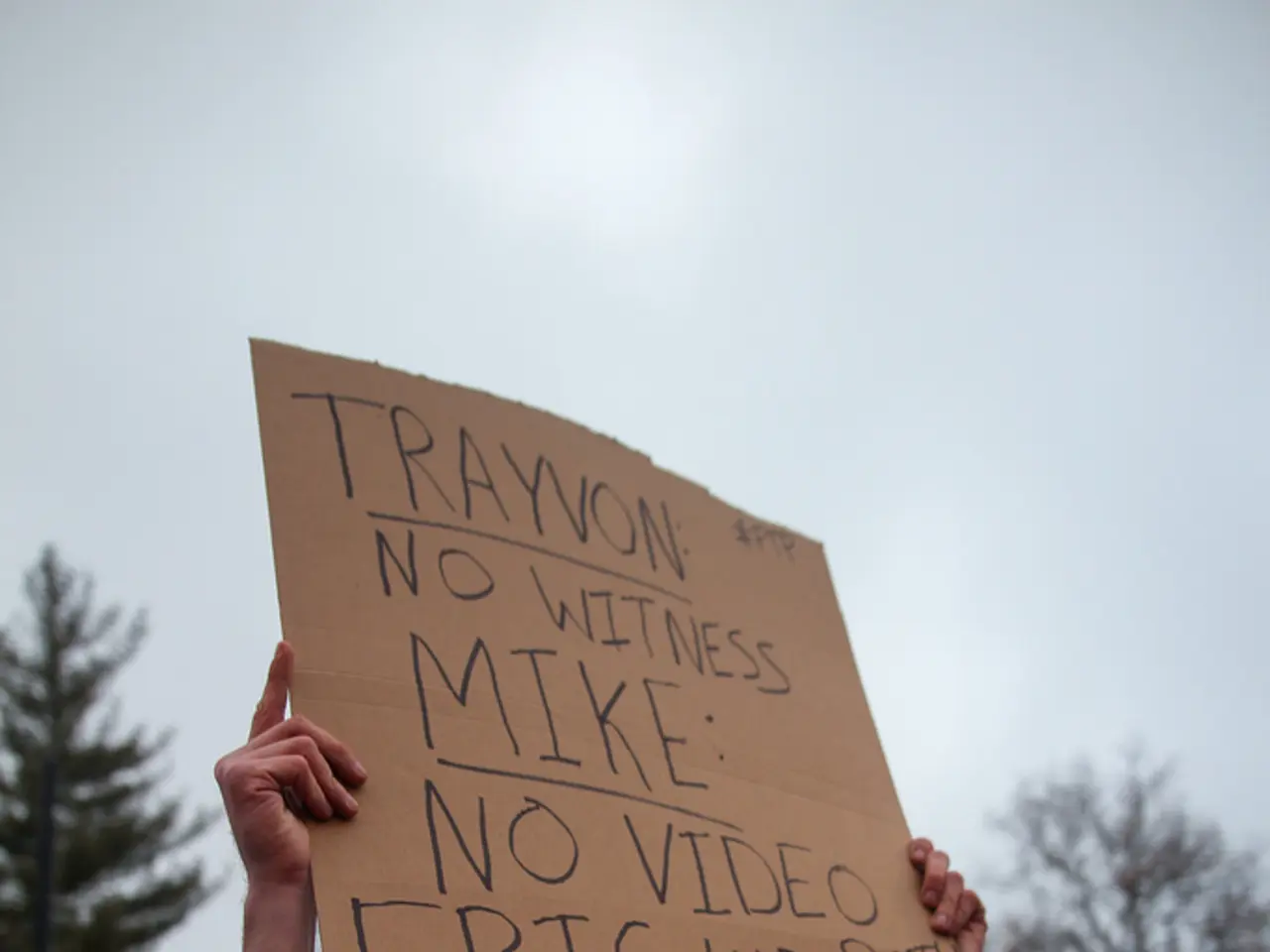Trump-Putin encounter and its following events potentially heralding a fresh chapter in the Ukrainian conflict?
Moscow has expressed willingness to accept continued U.S. military aid to the Kyiv government under certain conditions, signaling a renewed interest in resolving the Ukraine issue with the U.S., according to Russian newspaper Vedomosti. This development comes as U.S. Special Envoy Steve Witkoff recently held a three-hour meeting with Putin in Moscow.
The preparations for this meeting have been underway for several months, as reported by Russian state media. The venue for the Trump-Putin summit is expected to be on the Arabian Peninsula, with the UAE, Saudi Arabia, or Turkey being the favourites.
Following the Trump-Putin meeting in Alaska, no definitive major U.S.-Russia deals have been announced regarding Ukraine. However, several key expectations and proposals have emerged.
President Trump indicated that this initial meeting is primarily a "listening exercise" and expressed optimism about a possible second meeting involving Putin, Ukrainian President Zelenskyy, and himself, aimed at negotiating peace. Trump proposed that if the meeting with Putin goes well, a quick follow-up summit with Putin and Zelenskyy could occur to attempt more direct negotiations and possibly end the war.
Reports suggest that Putin may have softened his territorial demands, potentially limiting claims to the Donetsk region rather than the four Ukrainian regions he previously sought, and he may show increased flexibility on Ukraine’s demilitarization. However, Ukraine has not been directly involved in the current negotiations, with Zelenskyy affirming that Ukraine will not cede any territory, viewing it as unconstitutional and a potential trigger for further Russian invasions.
The U.S. is reportedly coordinating with European allies, who emphasize including Europe in diplomatic discussions and providing Ukraine with security guarantees to prevent future aggression. British Prime Minister Keir Starmer has stated that military plans to support Ukraine are ready and could be activated if a ceasefire is achieved, reflecting that Trump’s diplomatic efforts have created what some see as a "viable" chance for a ceasefire.
Despite the uncertain progress, the planned meeting could potentially be a turning point in the Ukraine war. The European Union is not involved in the negotiations, with representatives from Germany, Britain, France, or the EU not participating. Moscow demands not only the recognition of the Russian-occupied territories and the abandonment of Ukraine’s NATO membership aspirations, but also far-reaching guarantees for Russian-speaking citizens and the Orthodox Church.
Both sides could sell a potential Ukraine deal as a victory at home. Putin potentially giving his soldiers a breather in the Donbass without formally abandoning his strategic goals, and Trump potentially achieving a significant foreign policy success in his second term. Joint investments in Arctic projects, rare earth metals, infrastructure, and technology companies were discussed as potential areas of cooperation between the U.S. and Russia.
The negotiations are being held at the highest level, indicating the seriousness of the discussions. The last bilateral summit between Trump and Putin took place in the summer of 2018 in Helsinki, making the planned meeting their first personal encounter in years. Several cities, including the Vatican, Budapest, Geneva, and Kuala Lumpur, might also have outside chances for hosting the summit, but everything points to the Arabian Peninsula.
The proposed ceasefire with the front line frozen has been rejected several times in Western capitals and would not have a majority within Ukraine. Details of the U.S. proposal have emerged, suggesting a potential ceasefire in the Ukraine conflict, with Russian territorial gains effectively recognized by delaying a final decision on the status of annexed territories for 49 or 99 years. The New York Times wrote that Putin's primary goal is to conclude a peace treaty that achieves his larger geopolitical objectives, rather than capturing a specific territory in the eastern Ukrainian mining and coal region.
The leaked US proposals suggest a potential deal that includes a ceasefire, de facto recognition of Russian territorial gains, and a gradual lifting of sanctions. The U.S. proposal also includes a phased lifting of sanctions against Russia and the prospect of renewed energy cooperation, including the import of Russian gas and oil. The negotiations are ongoing, and the outcome remains uncertain.
Economic and social policy discussions may be on the table as both sides aim to find a viable resolution to the Ukraine conflict. This potential peace treaty, as reported by The New York Times, is intended by Putin to achieve his larger geopolitical objectives, not just capturing specific territories in eastern Ukraine.
The political implications of a Trump-Putin summit on the Arabian Peninsula could significantly impact future U.S.-Russia relations, particularly in terms of general news, war-and-conflicts, and politics.






